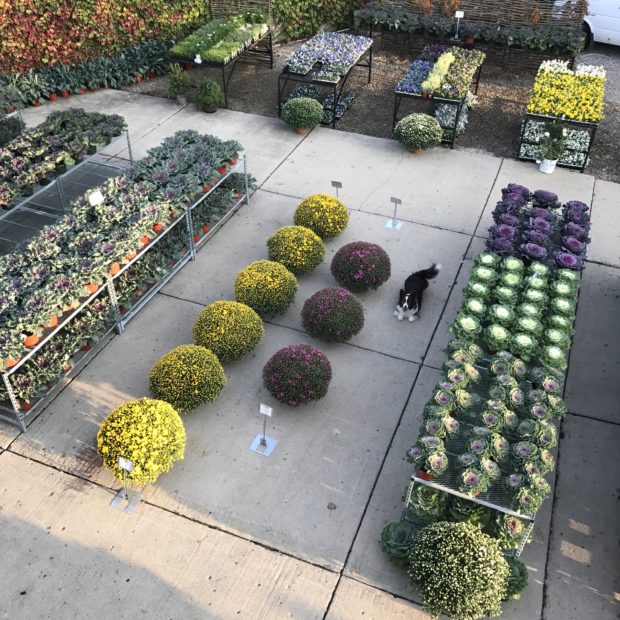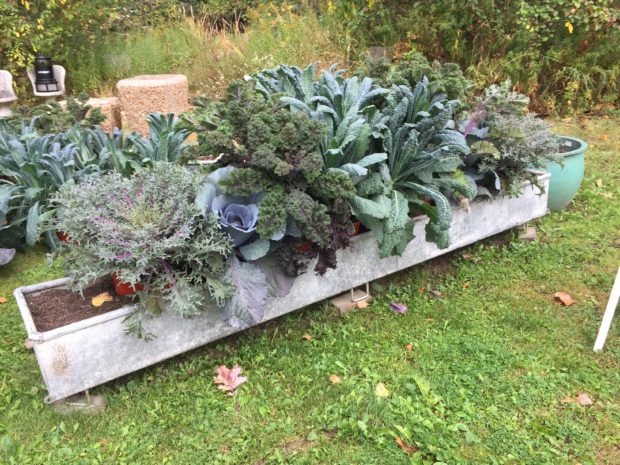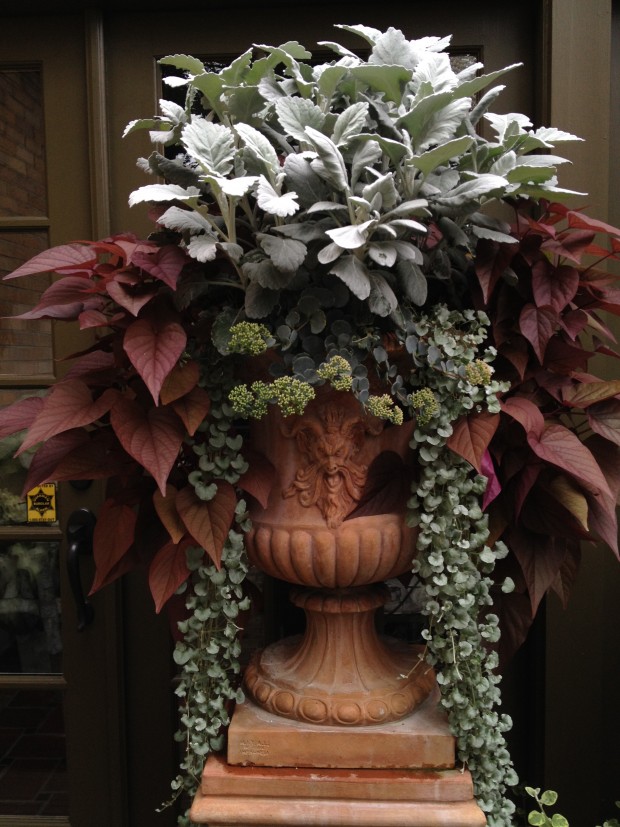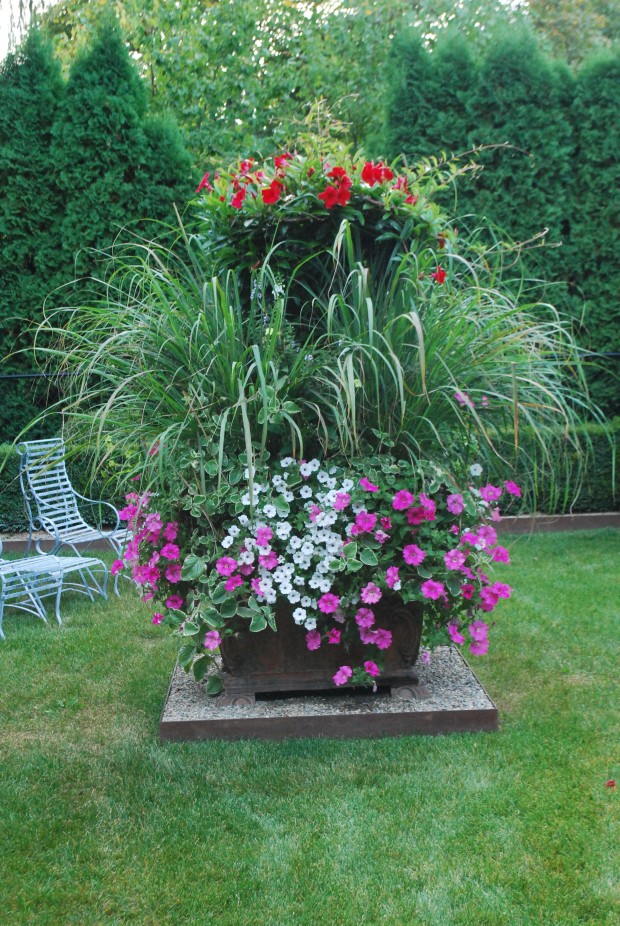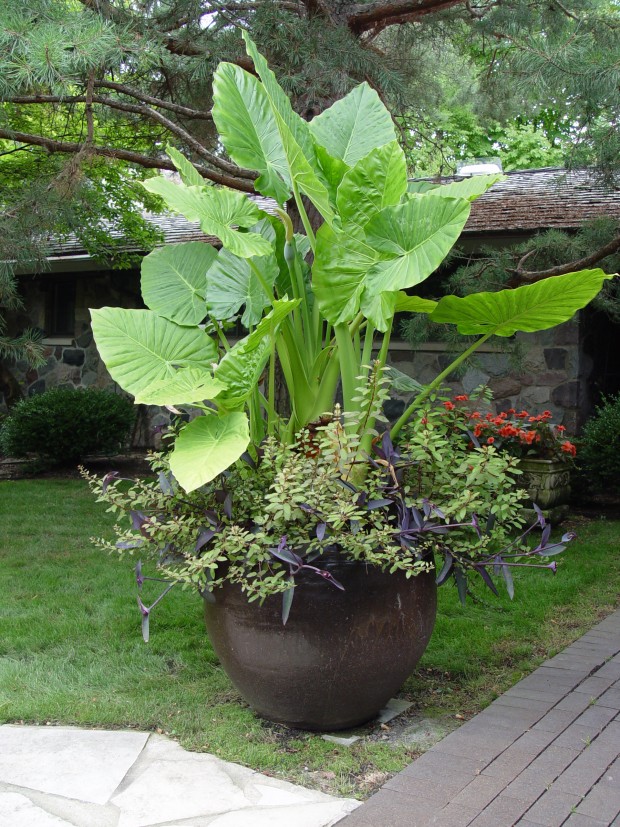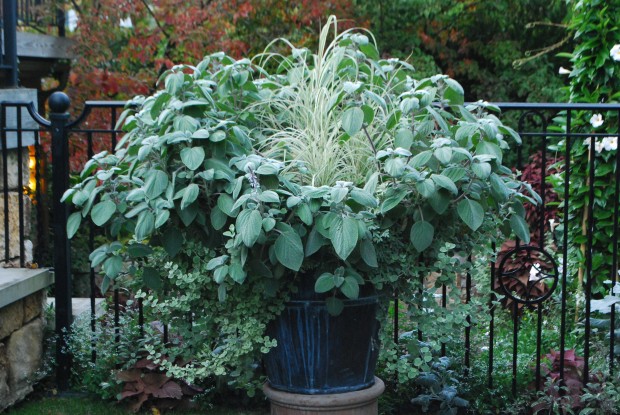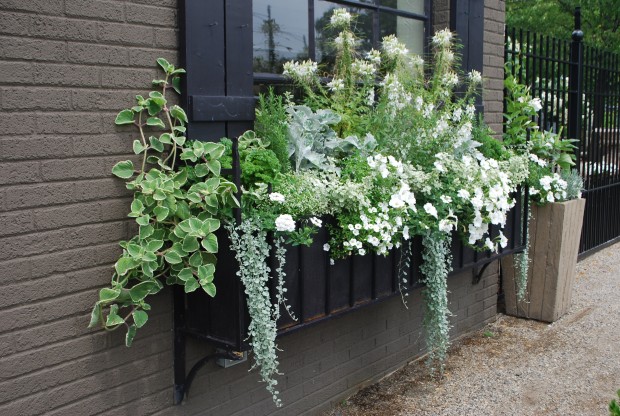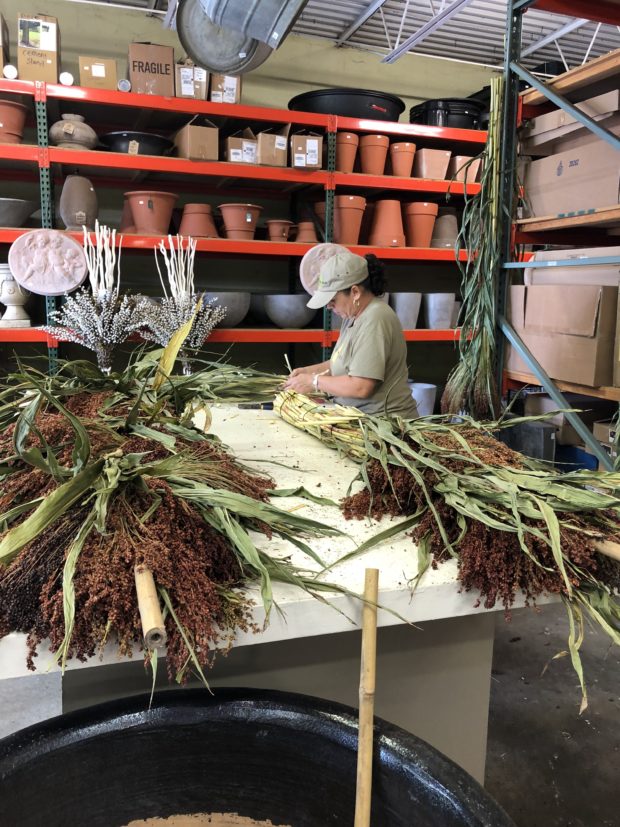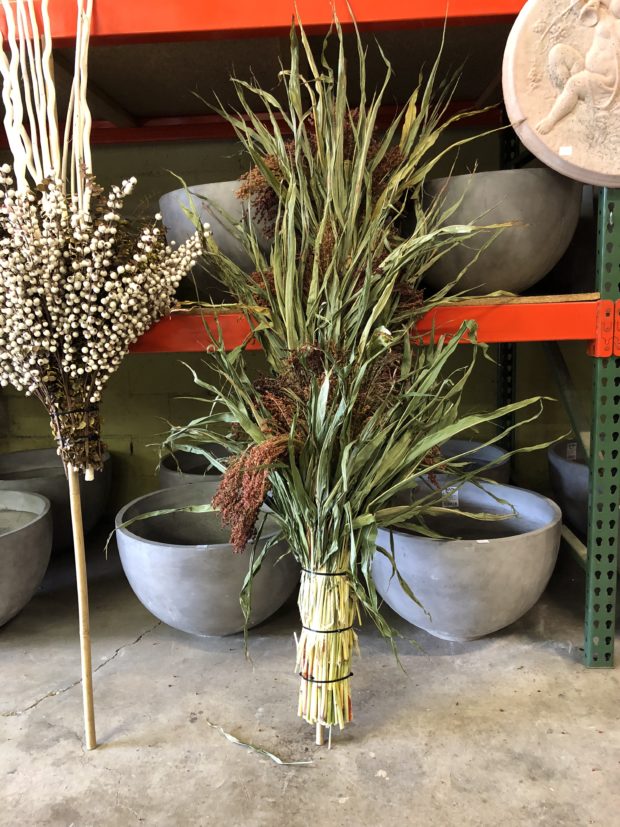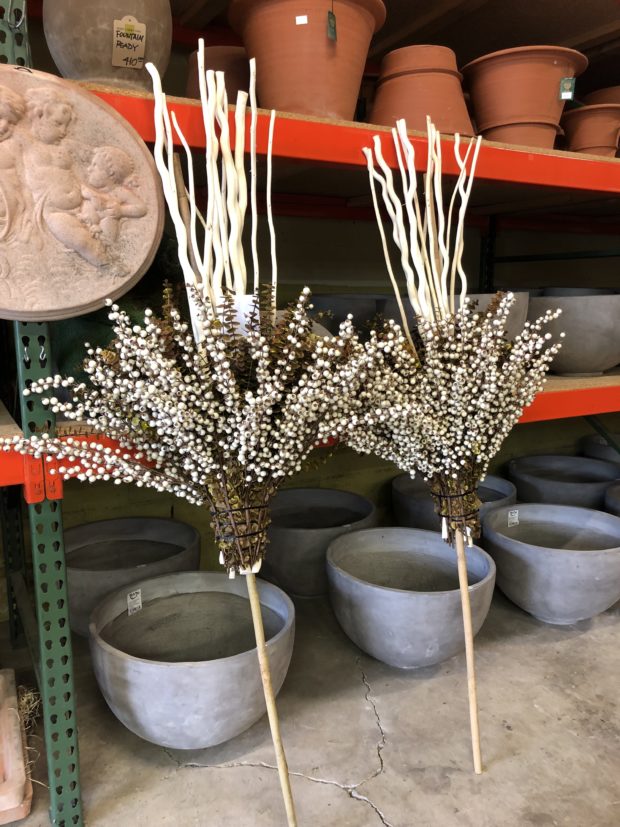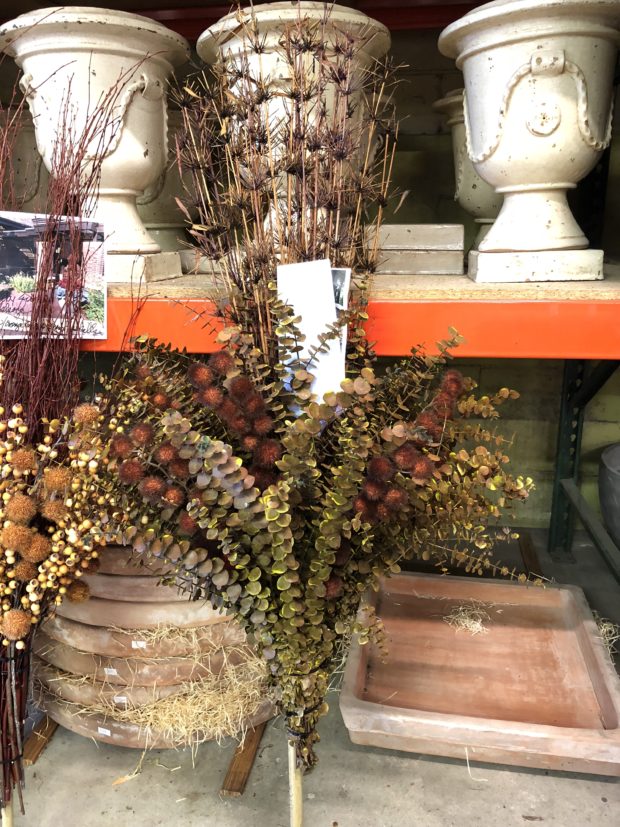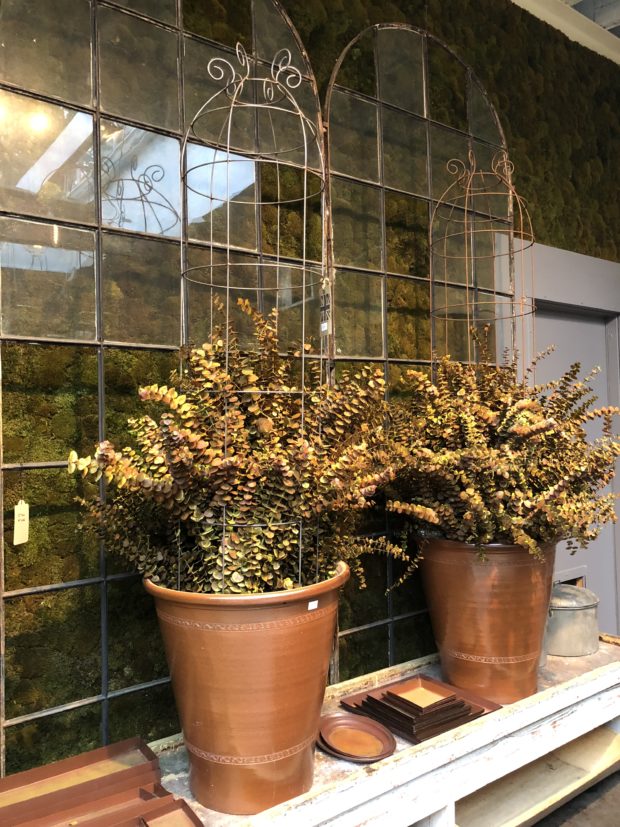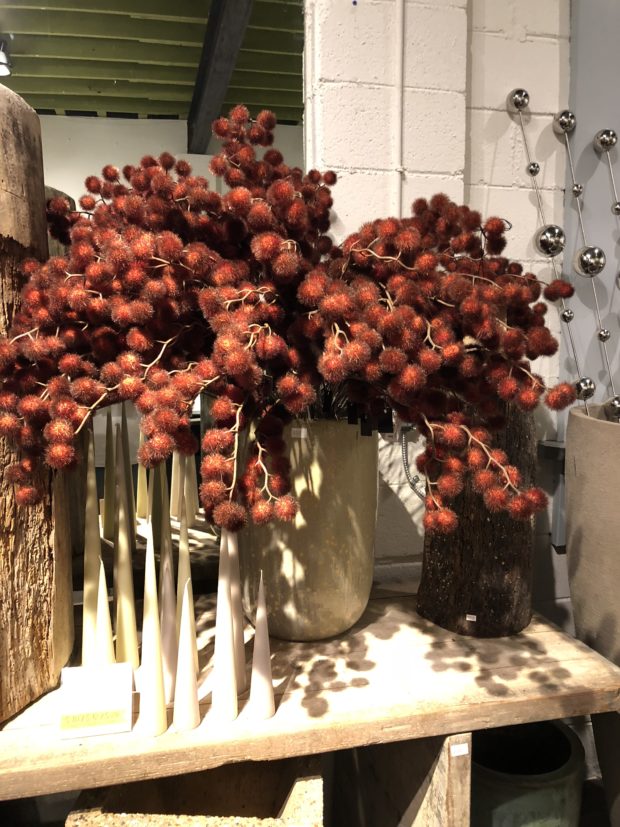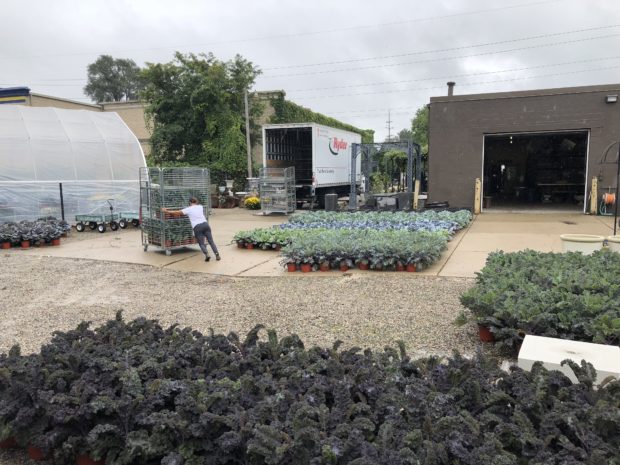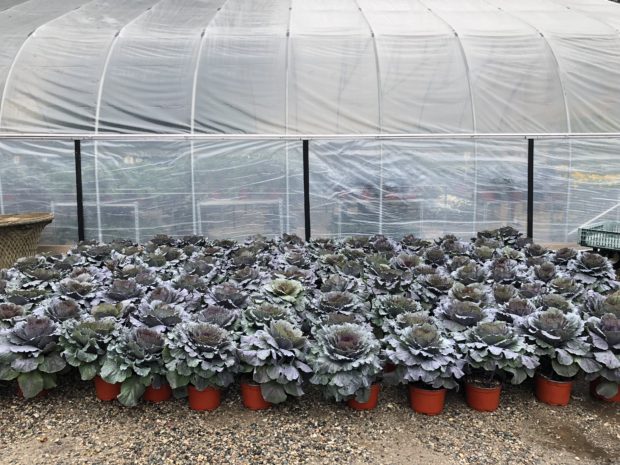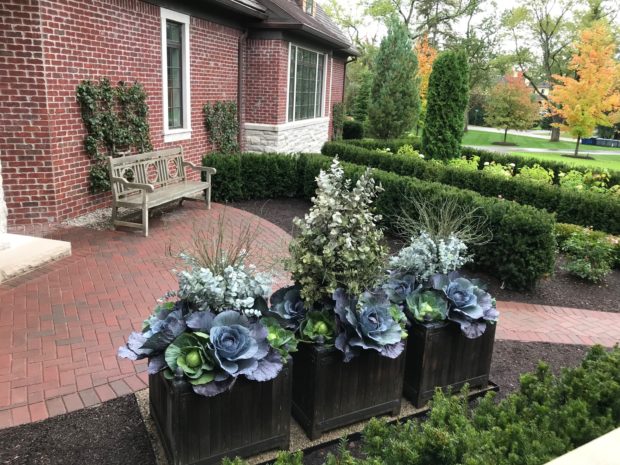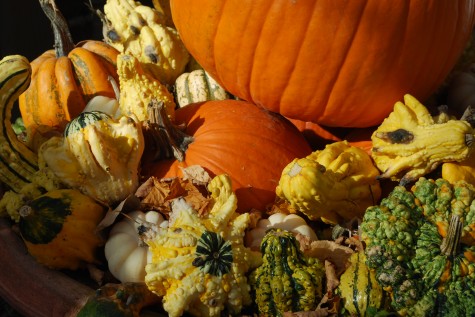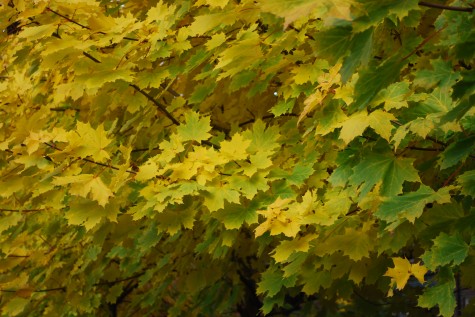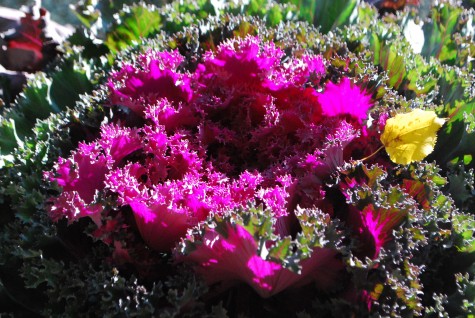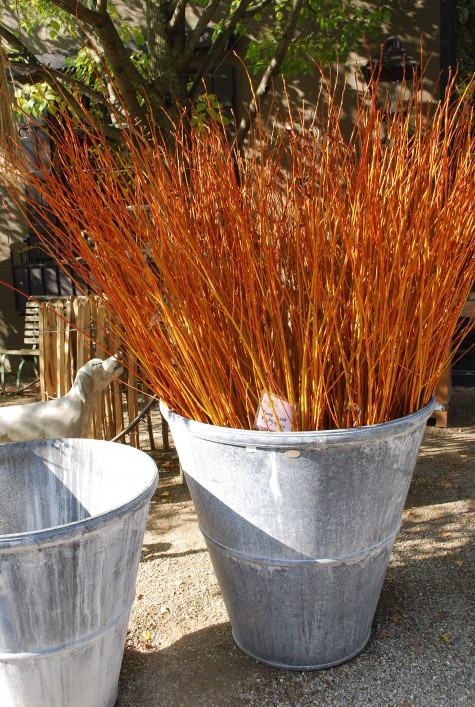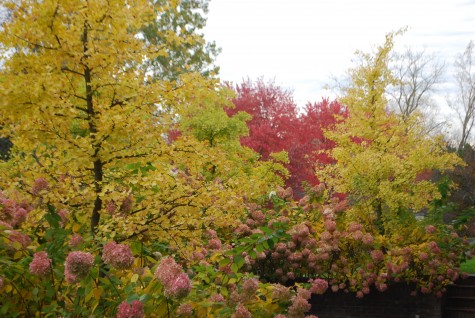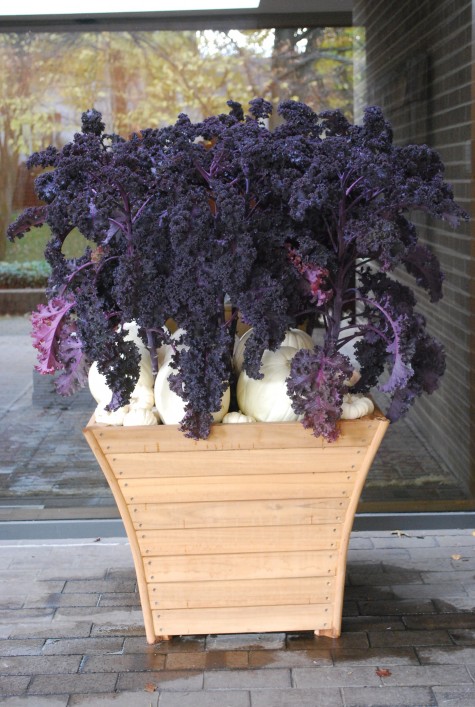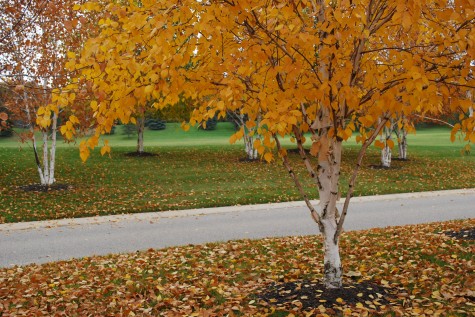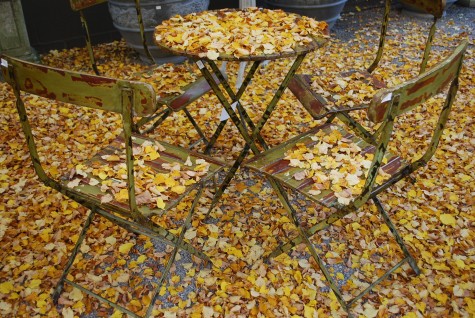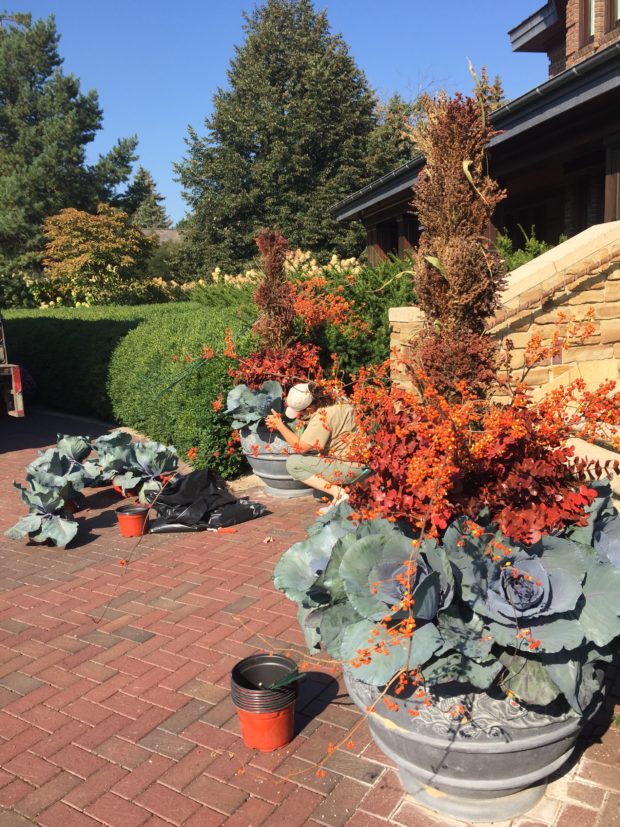 Our summer gardening season begins to wind down in September. Come Labor Day, change in the air. That change is refreshing and energizing. Towards the end of the month, the watering on the summer containers becomes a full time job. All of the soil in the containers is shot through and thoroughly congested with roots. Those abundant roots can absorb water as fast as it can be supplied. They invariably want more. A gardener has to have a big love for their summer containers to keep them thriving throughout September. By the time that fall sees fit to arrive, this gardener is ready.
Our summer gardening season begins to wind down in September. Come Labor Day, change in the air. That change is refreshing and energizing. Towards the end of the month, the watering on the summer containers becomes a full time job. All of the soil in the containers is shot through and thoroughly congested with roots. Those abundant roots can absorb water as fast as it can be supplied. They invariably want more. A gardener has to have a big love for their summer containers to keep them thriving throughout September. By the time that fall sees fit to arrive, this gardener is ready.
 Last week and the first of this was remarkable for its blistering and record setting heat. All the more effort was required to keep the summer pots going. Added to that, the care of first plants for the fall kept us really busy. Keeping up with the watering on our first shipments of fall cabbages, kales, pansies, lavender, thyme, lemon cypress and other fall friendly plants was not easy. It was 92 degrees, the first day we planted a collection of containers for fall. Fortunately for me, my crews are utterly professional and focused. They came to work with coolers filled with bottles of water that had spent the previous night in the freezer. They soaked every plant before it was loaded. They were dressed for the occasion. They sweated it out with aplomb. We had set a date to plant containers for fall for this client, and we honored that commitment. All of the pots had been emptied of the summer plants, and the fall centerpieces constructed the day before.
Last week and the first of this was remarkable for its blistering and record setting heat. All the more effort was required to keep the summer pots going. Added to that, the care of first plants for the fall kept us really busy. Keeping up with the watering on our first shipments of fall cabbages, kales, pansies, lavender, thyme, lemon cypress and other fall friendly plants was not easy. It was 92 degrees, the first day we planted a collection of containers for fall. Fortunately for me, my crews are utterly professional and focused. They came to work with coolers filled with bottles of water that had spent the previous night in the freezer. They soaked every plant before it was loaded. They were dressed for the occasion. They sweated it out with aplomb. We had set a date to plant containers for fall for this client, and we honored that commitment. All of the pots had been emptied of the summer plants, and the fall centerpieces constructed the day before.
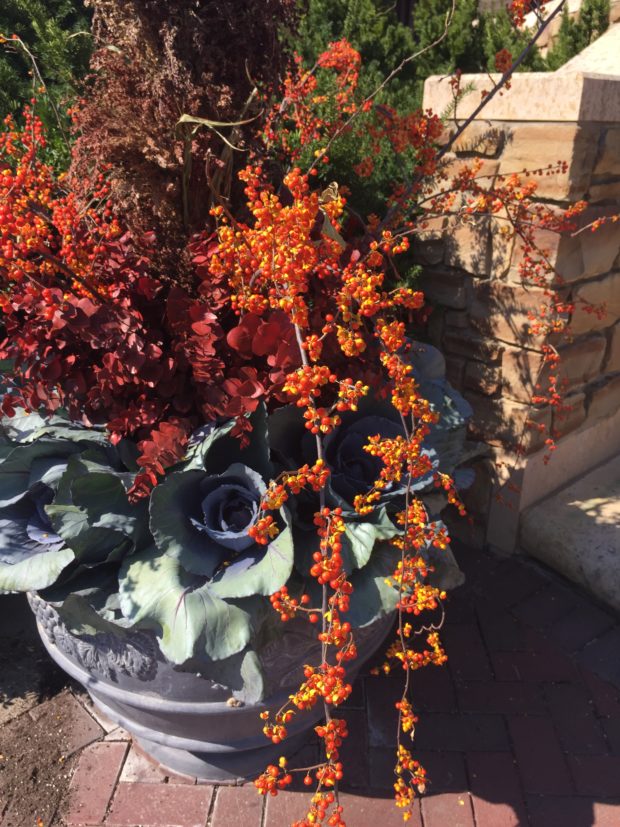 I have a special affection for pots planted for the fall season. Even when my first taste of fall is hot as blazes. The summer is that time when every gardener has the opportunity to enjoy the work they put in place in the spring. The fall brings all of those efforts to fruition, and then to a close. Fall pots stuffed with the moments and memory of the harvest are enchanting. The colors, textures and shapes are specific to the season. The low in the sky slanting light saturates everything it strikes, producing what we know as “fall color”.
I have a special affection for pots planted for the fall season. Even when my first taste of fall is hot as blazes. The summer is that time when every gardener has the opportunity to enjoy the work they put in place in the spring. The fall brings all of those efforts to fruition, and then to a close. Fall pots stuffed with the moments and memory of the harvest are enchanting. The colors, textures and shapes are specific to the season. The low in the sky slanting light saturates everything it strikes, producing what we know as “fall color”.
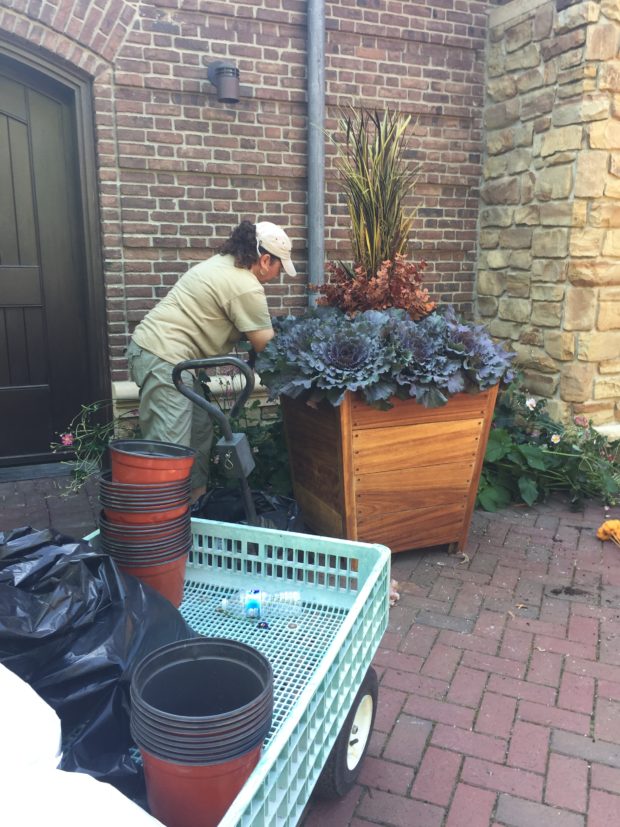 Tall elements for fall containers can come from a lot of places. Ornamental grasses come immediately to mind. Rob makes sure we have plenty of natural dried sticks, stems, and seed pods available. I am fortunate to have preserved and dyed eucalyptus in every color imaginable to place in fall pots. The cut stems of eucalyptus are able to absorb preservative and color up through the stems and into the leaves. As the color is absorbed and not applied, the stems are color fast outdoors, and are remarkably resistant to degradation from sun and rain.
Tall elements for fall containers can come from a lot of places. Ornamental grasses come immediately to mind. Rob makes sure we have plenty of natural dried sticks, stems, and seed pods available. I am fortunate to have preserved and dyed eucalyptus in every color imaginable to place in fall pots. The cut stems of eucalyptus are able to absorb preservative and color up through the stems and into the leaves. As the color is absorbed and not applied, the stems are color fast outdoors, and are remarkably resistant to degradation from sun and rain.
 But no material is as important as the plants. This year’s crop of custom grown kale and cabbage are the best it has ever been my pleasure to plant. The container above on the left is planted with redbor kale grown to an astonishing size. The companion planter features 3 Purple Queen cabbage, an edible red cabbage. It did not take many plants to create a fall container scene that will last well into November.
But no material is as important as the plants. This year’s crop of custom grown kale and cabbage are the best it has ever been my pleasure to plant. The container above on the left is planted with redbor kale grown to an astonishing size. The companion planter features 3 Purple Queen cabbage, an edible red cabbage. It did not take many plants to create a fall container scene that will last well into November.
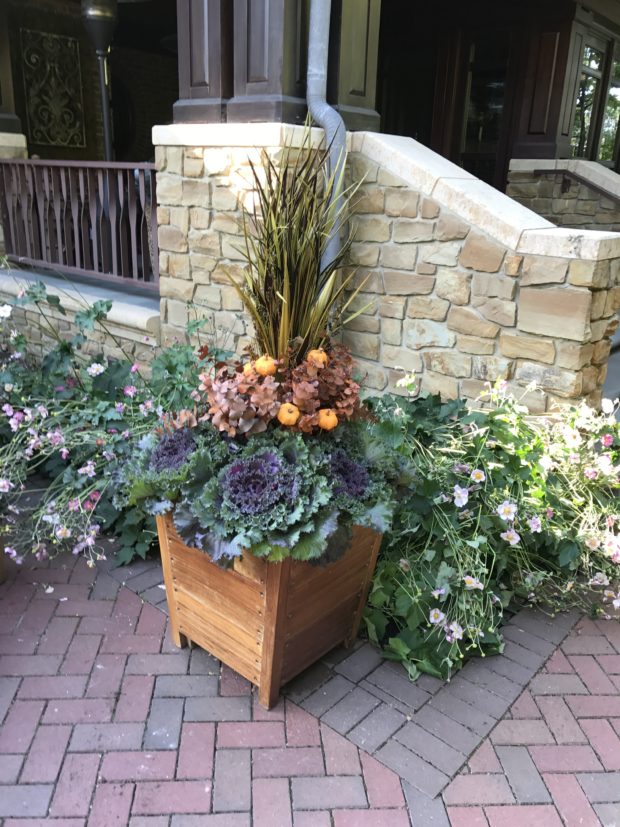 Coral Queen ornamental cabbage leaves are a beautiful shade of bluish green. The centers of the plants will color up a deep magenta purple as the temperatures drop.
Coral Queen ornamental cabbage leaves are a beautiful shade of bluish green. The centers of the plants will color up a deep magenta purple as the temperatures drop.
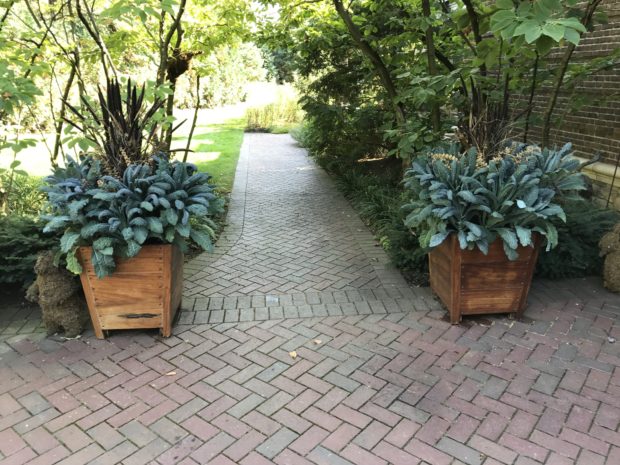 Tuscan kale, also known as dinosaur kale, has large, strappy and highly textured leaves. The nutritional value of kale is legendary, but it is also beautiful to look at. Individual leaves may grow to 3 feet long.
Tuscan kale, also known as dinosaur kale, has large, strappy and highly textured leaves. The nutritional value of kale is legendary, but it is also beautiful to look at. Individual leaves may grow to 3 feet long.
 fall container with Tuscan kale
fall container with Tuscan kale
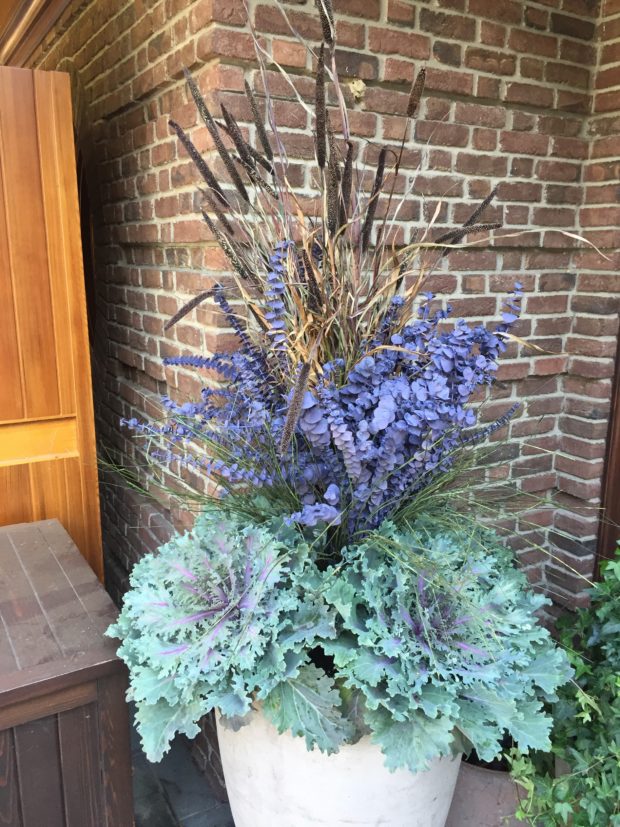 fall container with millet and lavender eucalyptus
fall container with millet and lavender eucalyptus
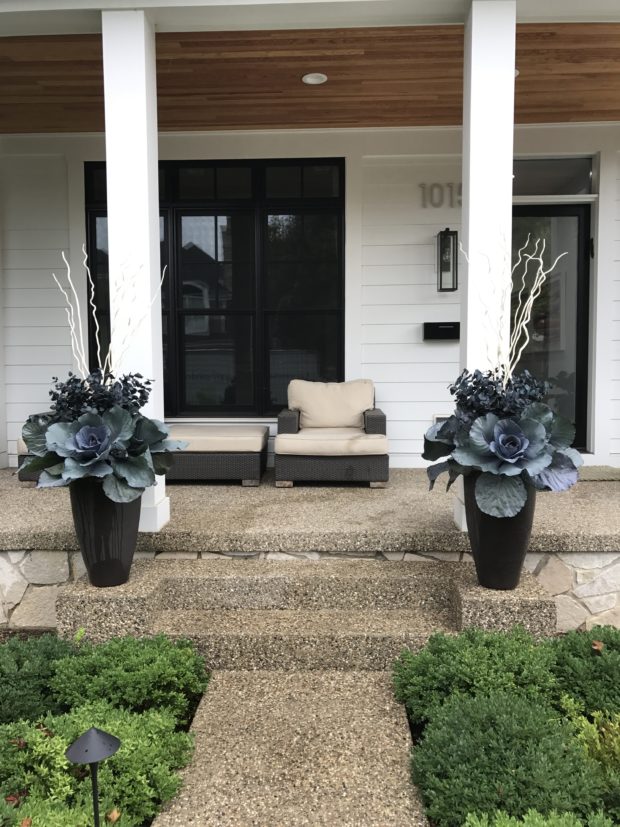 containers with Ruby Queen cabbage
containers with Ruby Queen cabbage
 the kale and cabbage from the roof
the kale and cabbage from the roof
